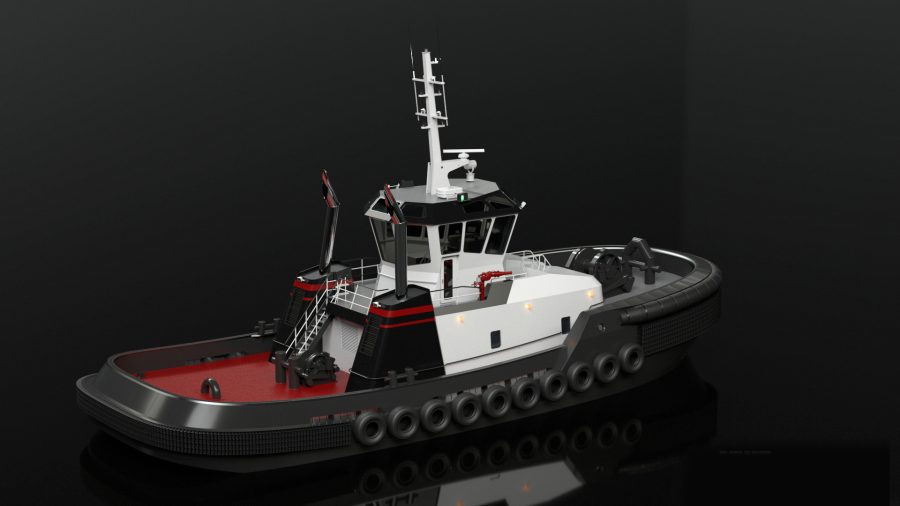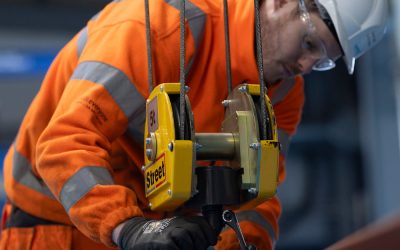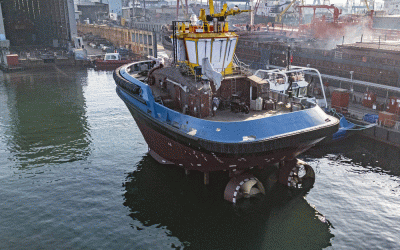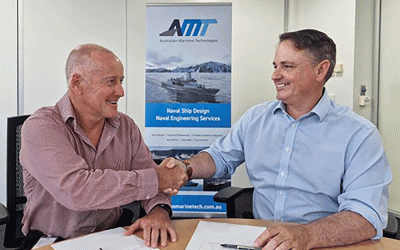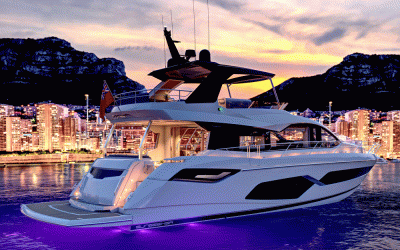A methanol-hybrid tugboat developed by Glosten and ABB should enable operators to switch to greener operations without any jarring overhauls to procedures, writes Stevie Knight
While tugboats’ average hours of operation are low compared to other vessel types – often just 2,000-3,000 hours annually – they still contribute significantly to overall port emissions. With stakeholders keen to demonstrate sustainability in action, reducing operational emissions is essential.
The new methanol-hybrid SA-100, a 30.48m Azimuth Stern Drive (ASD) harbour tug advanced by naval architect Glosten and power systems specialist ABB, began with a fundamental rethink of the challenges and potential areas for innovation. However, this vessel doesn’t appear at all ‘special’. In fact, a lot of work went into making it seem familiar both in handling and outward appearance.
“By now, the industry has really zeroed in on what works well for ship docking operations,” Peter Soles, marine operations lead at Glosten, tells Ship & Boat International. There are size constraints: “You’re normally targeting 105ft [32m] or less, because anything longer is getting a bit big and bulky for optimal ship-handling in confined port waterways,” he says. “ASD propulsion with 90tonnes bollard pull is what many US pilot associations want to see for moving very large ships, so that’s the number we needed to hit for this particular market.”
Superstructure geometry is also important: the accommodation and octagonal, upswept glass wheelhouse should be located roughly amidships and sized to allow the tug to work beneath the flare of the ship’s bow with very low risk of contact. “We also know that having a semi-raised foc’sle is not only advantageous for seakeeping: it improves lines of sight and elevates the tug’s primary working end,” Soles says. Likewise, the aft freeboard is traditionally low, “so that towing astern is still an option”, he says, adding: “We’ve stayed consistent with industry norms in terms of the hull and the whole exterior arrangement.”
Engine selection
Inside the hull, it’s a different story. “Modern assist tugs have a different operating profile, where significant power may be required, but they generally operate at the very lowest end of the power range of their engines: typically under 50% load, 80% of the time”, explains Dave Lee, VP of sales (global workboat responsible) at ABB. “The other 20% of the time, additional power must be available instantly.”
The first hurdle in the concept development was finding a suitable power system. Although methanol marine engines had entered the market, they were medium speed models – “which, being quite large, and having slower response times compared to high-speed engines, aren’t generally a good fit for ship-handling tugs”, says Soles. A bigger engine room would be required, driving up both the overall size and tonnage of the vessel.
Serendipitously, Caterpillar announced the development of its new dual-fuel 3500E engine series, including the 3512E model. Soles recalls: “When we learned about that we got very excited, because US operators are familiar with Caterpillar engines. In many cases, we are talking about the same engine installed already on many of their existing boats: operators know the Caterpillar service model and they know precisely what it takes to keep these engines maintained.”
The four-stroke 3500E-series engines utilise a diesel cycle, meaning that methanol, with its very low cetane number (<5) and inherent compression-ignition resistance, requires a very small amount of diesel to act as a pilot fuel. Before any additional aftertreatment, NOx, SOx and particulate matter (PM) are reduced by 60%, 99% and 95% respectively, compared to pure diesel. Caterpillar has said the target for commercial introduction of an IMO type-approved, fuel-injected, dual-fuel methanol engine is 2025, which suits even the most aggressive construction timelines for a new SA-100. There is also some suggestion that, within a couple of years, one or more methanol conversion options will be available for 3512E engines and gensets that are in production now.
Soles adds that an operator doesn’t even have to use methanol until the time is right. “These engines can run on diesel indefinitely until the operator decides they’re ready to make the switch,” he says. “The conversion is fairly painless, too, provided you’ve already designed the tanks and the fuel delivery system for methanol. It involves a remarkably simple in-frame engine overhaul.”
While ‘grey’ methanol from natural gas is currently the most available source, the design promises additional carbon reduction when renewable (or ‘green’) methanol enters the market, Lee adds.
Use of space
The SA-100 features a diesel/methanol-electric power system, with the electrical power distributed by a common DC bus. This arrangement allows the generators to be switched on and offline depending on demand, putting the gensets in that 80% load range 80% of the time. “You’re in the sweet spot for fuel consumption”, says Lee.
This arrangement allows for the use of L-drives as opposed to Z-drives, making better use of space inside the tug. “Instead of occupying valuable ‘floor space’, we simply put a motor on top, out of the way”, says Lee. This is another design avenue that’s paying off for tugs: advances in permanent magnet technology have allowed these drives to become very compact.
Above all, the arrangement supports reliability. “You don’t have a shatt line or a gearbox to worry about,” Lee explains, referring to components that typically “take a beating” on board a tug. Eliminating these mechanical couplings sidesteps many issues, and makes the drivetrain far easier to install compared to traditional builds.
Then there is the often-overlooked aspect of power demand in tug operations. “Most people don’t understand that tugs are extremely dynamic in how they use their power,” says Lee. “The loads change fast: you’re up and down with the sticks all the time.”
By integrating marine bafteries into the propulsion system – likely somewhere between 750kWh and 1MWh of energy storage – the achievable bollard pull can be boosted up to 90tonnes without oversizing the engines. Baftery power can also be used for zero-emission harbour transits.
Batteries add to operational reliability and help reduce maintenance. “With this type of system, you can lose some of your power but still transit and even work,” says Lee. “That’s in contrast to a more traditional system, where, if you lose a main engine or one of your generators, the vessel is out of service until it’s repaired,” he adds. It also makes the tug modifiable, making it nearly a fuel-agnostic solution. “We know, of course, there’s a lot more to come with hydrogen and fuel cells,” Lee continues. “Our simple thought is: we don’t care where the power comes from. We just need to be able to distribute it to the electric drive motors.”
Layout issues
This didn’t solve the layout issues for the new SA100 design: challenges remained with engine room sizing, as well as positioning of the fuel tanks for regulatory compliance.
“You can put a methanol tank against the skin of the boat from the waterline down,” says Soles, “but if you have an engine room or any other occupiable space next to it, you must create a 600mm cofferdam between the two – and that space has to be vented and accessible.” He admits that it took a lot of tweaking, but a solution was finally found that accommodated all the requirements.
This leads to one final point: Glosten doesn’t pursue a design through to a contract-ready package without a client because, as Soles points out, each operator will need to make adjustments, and just a few of those can upend the cost-effectiveness of an off-the peg approach. “What we do instead is introduce a concept that’s meant to initiate a conversation with operators,” he says. “We like to leave the door open for them to be directly involved in the design process and make changes.”
Although this tug is aimed to meet the OpEx demands of the US’ niche, sub-100gt market, “there’s room for someone to come to us and say, ‘Hey, I like your boat, but I don’t want the hybrid system’,” Soles says. “We can reply, ‘OK, you can still use these Caterpillar engines but direct couple them to Z-drives’. That is absolutely an option.” Likewise, if an operator isn’t limited to a sub-100gt vessel, Glosten can adapt the design with considerably more flexibility in the arrangement.
TECHNICAL PARTICULARS
SA-100
Length, oa: 30.48m
Breadth: 11.9m
Draught: 5.5m
Gross tonnage: 98.7gt
Bollard pull: 90tonnes
